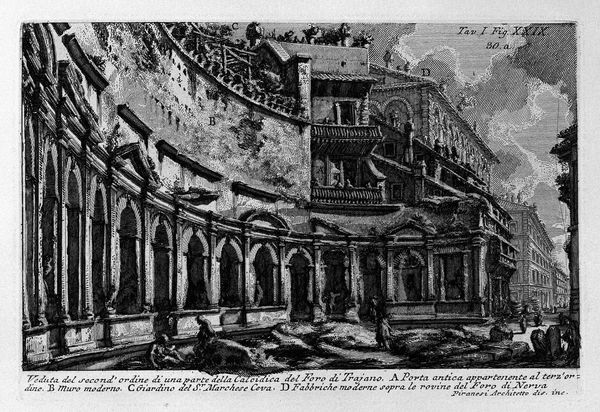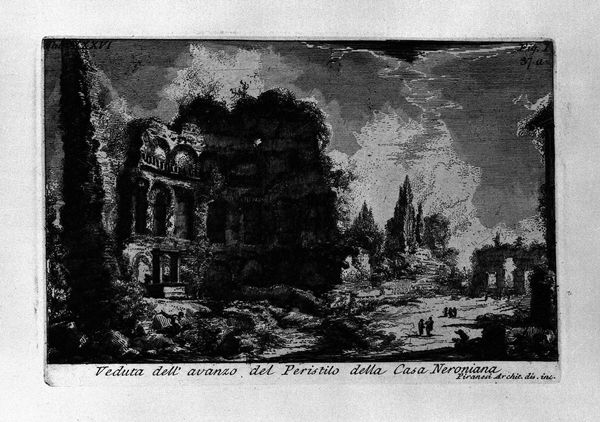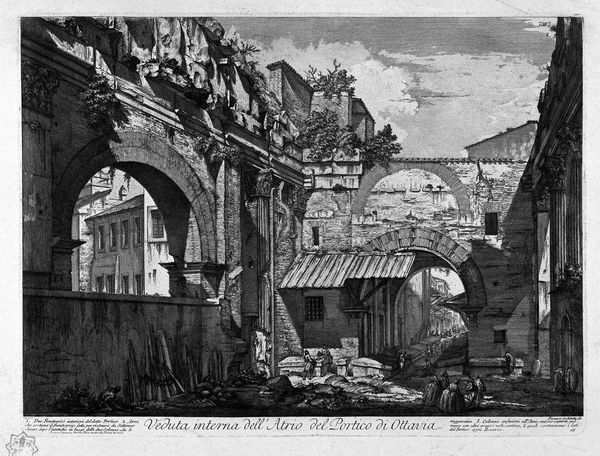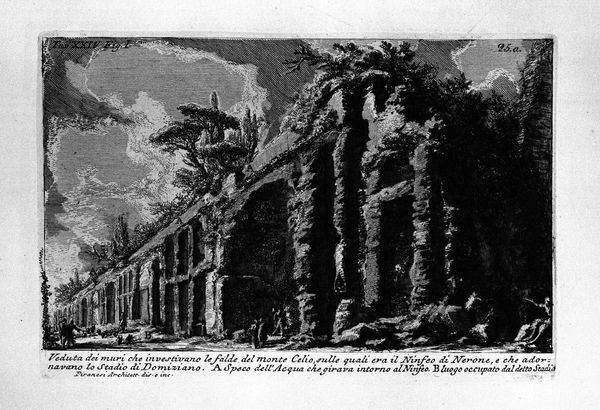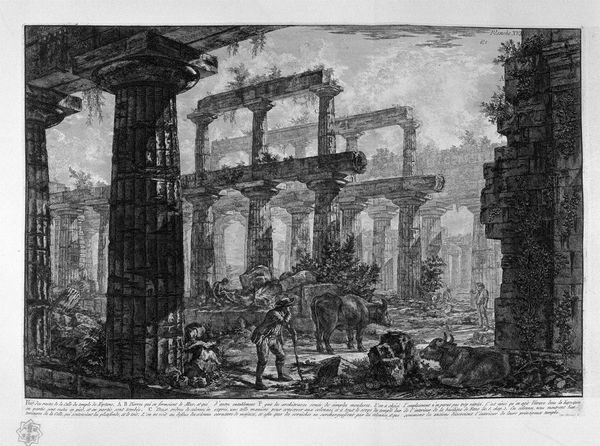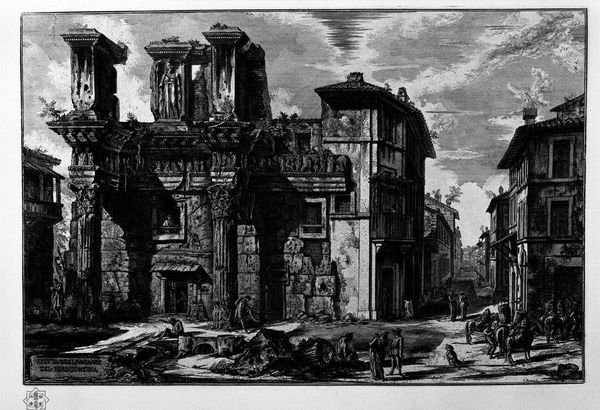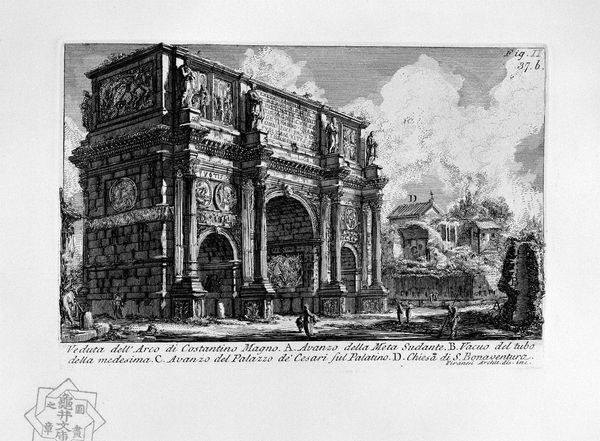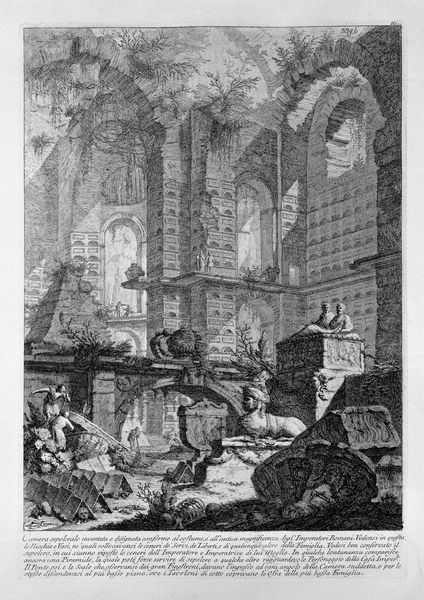
print, etching, intaglio, engraving, architecture
#
neoclacissism
# print
#
etching
#
intaglio
#
landscape
#
perspective
#
form
#
romanesque
#
column
#
line
#
cityscape
#
history-painting
#
engraving
#
architecture
#
realism
Copyright: Public domain
This is plate 35 from volume one of Giovanni Battista Piranesi’s “Roman Antiquities,” an etching made in Italy during the 1750s. Piranesi was a Venetian artist whose works give us insights into the social conditions that shaped artistic production. Here, Piranesi presents us with his vision of the Palatine Hill, one of the most ancient parts of Rome, with its ruins of imperial palaces. His images create meaning through visual codes that evoke a glorious past, contrasted with the realities of 18th-century Rome. The etching style creates a dramatic effect, emphasizing the grandeur of the ruins but also their state of decay. Piranesi's work reflects the cultural and institutional context of his time, where there was a growing interest in archaeology and the classical world. His prints were popular among tourists and collectors, who sought to acquire images of Rome's past. As historians, we can use sources like guidebooks and travel accounts to reconstruct the meaning of his images. We can think about how art can become an institution, by shaping how people perceive themselves.
Comments
No comments
Be the first to comment and join the conversation on the ultimate creative platform.
